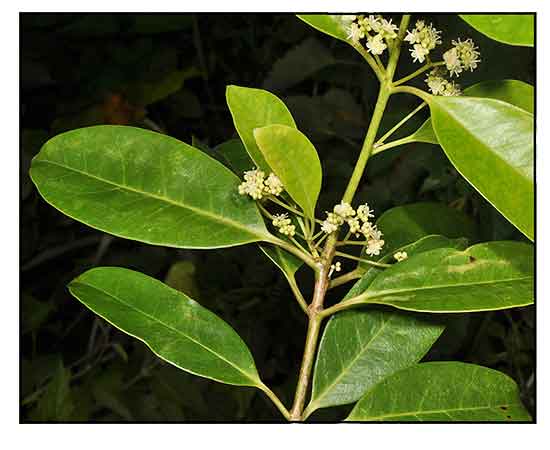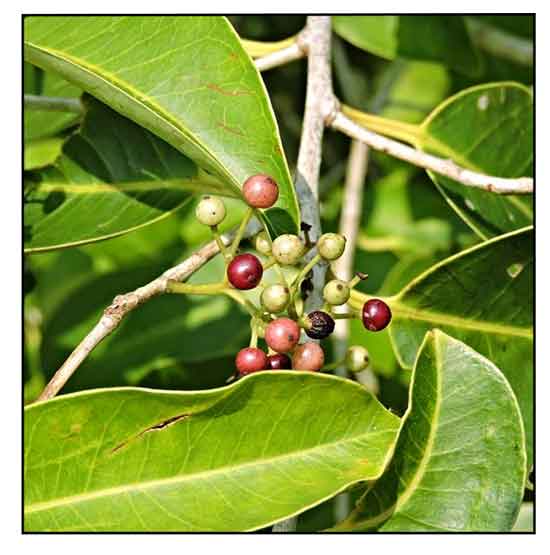
Family • Aquifoliaceae
Pait
Malagidiya
Ilex cymosa Blume
MARSH HOLLY / MENSIRA
| Scientific names | Common names |
| Ilex cumingiana Rolfe | Malagidiya (Tag.) |
| Ilex cymosa Blume | Pait (Tagalog) |
| Ilex fabrilis Pierre | Marsh holly (Engl.) |
| Ilex philippinensis Rolfe | Mensira (Trade name) |
| Ilex singaporiana Wall. | |
| Ilex thorelii Pierre | |
| Leucodermis javanica Planch. ex Hook.f. | |
| Prinos cymosa Hassk. | |
| Pseudehretia paniculata Turcz. | |
| Salacca zalacca (Gaertn.) Voss is an accepted name. KEW: Plants of the World Online | |
| Other vernacular names |
| BORNEO: Bangkulat, Bangkulatan, Belimbing hutan, Bengkulat, Bengkulatan, Bingkolat, Kayu bawang, Kerdam ayer, Mangkulat, Mer pinggau, Mogkulat, Perdoh, Sidapong, Tampulan. |
| INDONESIA: Mensira gunung, Ki bonteng, Ki sekel. |
| MALAYSIA: Timah-timah, Bengkulat, Bubpuk. |
| SUNDANESE: Ki sekel. |
| THAI: Sai khe tai, Se-ko. |
December 2023
![]()
 |
| PHOTOS / ILLUSTRATIONS |
| IMAGE SOURCE: Aquifoliaceae : Ilex cymosa / Flowering twigs / Copyright © 2014 by P B Pelser & J F Barcelona (contact: pieter.pelser@canterbury.ac.nz) [ref. DOL92422] / Non-Commercial Use / Click on image or link to go to source page / Phytoimages.siu.edu |
| OTHER IMAGE SOURCE: Aquifoliaceae : Ilex cymosa / Fruiting twigs / © earth.com / Nature•Science•Life / Non-commercial use / click on image or link to go to source page / earth.com |
Additional
Sources and Suggested Readings |
• |
DOI: It is not uncommon for links on studies/sources to change. Copying and pasting the information on the search window or using the DOI (if available) will often redirect to the new link page. (Citing and Using a (DOI) Digital Object Identifier) |
| List of Understudied Philippine Medicinal Plants |
| New plant names needed The compilation now numbers over 1,300 medicinal plants. While I believe there are hundreds more that can be added to the collection, they are becoming more difficult to find. If you have a plant to suggest for inclusion, native or introduced, please email the info: scientific name (most helpful), local plant name (if known), any known folkloric medicinal use, and, if possible, a photo. Your help will be greatly appreciated. |
• |
 |



